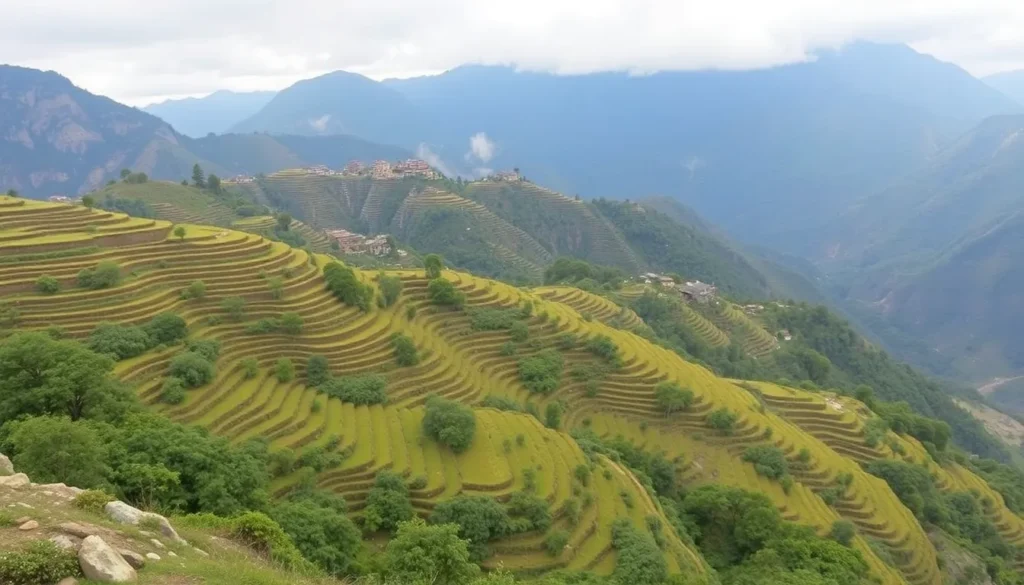Trekking Independiente en Sapa: Guía de Nos Sapa-ramos

Embarking on a journey to Sapa is not just about reaching a destination; it's an adventure that begins the moment you step onto the train. The vibrant atmosphere, filled with laughter and camaraderie, sets the tone for an unforgettable experience. Picture this: a train packed with enthusiastic locals celebrating life, sharing stories, and inviting you into their joyful world. Let's delve into what makes trekking in Sapa a must-do for every traveler.
- The journey to Sapa: A Memorable Experience
- Exploring Sapa: What to Do and See
- Trekking Routes: An Immersive Experience
- Reaching the Village: A Journey of Discovery
- Transport Tips: Getting to and from Sapa
- Ideal Seasons for Visiting Sapa
- Culinary Delights: Where to Eat in Sapa
- Accommodations: Where to Stay in Sapa
The journey to Sapa: A Memorable Experience
Traveling to Sapa can be an adventure in itself. Opting for a hard seat ticket might seem daunting at first, especially when surrounded by a lively group of Vietnamese celebrating without a care in the world. They welcomed me with laughter, offering everything from beers to bananas, making the atmosphere light and enjoyable.
As the train chugged along, the scenery outside transformed from urban landscapes to lush green hills, hinting at the beauty that awaited in Sapa. The excitement built as we neared our destination, greeted by warm sunshine and a refreshing breeze upon arrival. Sapa's charm is undeniable, promising breathtaking views and unforgettable experiences.
Exploring Sapa: What to Do and See
Once in Sapa, the options for exploration are abundant. The town is a hub for cultural experiences and outdoor adventures. Here are some highlights to consider:
- Stroll through the local market: Engage with the Hmong women selling their handcrafted goods.
- Visit the rice terraces: These iconic landscapes are a sight to behold, especially during the planting and harvesting seasons.
- Embark on a trek: Hiking through the stunning valleys and mountains is a must-do activity for adventurers.
With a couple of maps in hand, I set off on my trek, eager to discover the hidden gems of the region.
Trekking Routes: An Immersive Experience
My journey began with a short circuit, leading me to a charming waterfall that cascaded down a rocky cliff. The thrill of the hike was palpable as I navigated through the valleys, guided by friendly locals who offered directions and shared stories of their lives. It was an immersive experience in every sense.
The lush landscapes were breathtaking, even when the rice terraces were not the vibrant green seen in postcards. Instead, I was met with tranquil waters reflecting the sky, surrounded by towering mountains that beckoned for exploration. Here’s a breakdown of my trek:
- Start at Sapa: Begin your adventure by heading towards Cat Cat Village.
- Follow the river: The path along the river offers stunning views and opportunities to meet locals.
- Encounter the waterfalls: Discover several cascading waterfalls along the way.
- Explore remote villages: Engage with the indigenous communities and learn about their culture.
Reaching the Village: A Journey of Discovery
After about five hours and eight kilometers of hiking, I finally reached my destination. The sense of accomplishment was immense, but the adventure wasn't over yet. A quick ride on a motorcycle took me back to my hotel, where I could reflect on the day's experiences.
For those looking for a guided experience, there are plenty of options available in Sapa. Local guides can provide insights into the culture, history, and hidden trails, ensuring you don’t miss any of the beauty the region has to offer.
Transport Tips: Getting to and from Sapa
Getting to Sapa from Hanoi is relatively straightforward. Here are some tips to make your journey smooth:
- Train travel: A hard seat ticket from Hanoi to Lao Cai costs around 200,000 dongs. From Lao Cai, a bus ride to Sapa costs about 50,000 dongs.
- Bus options: Many private buses offer comfortable seating for a reasonable price.
- Accommodation: Consider staying at local hostels or guesthouses to immerse yourself in the culture.
Ideal Seasons for Visiting Sapa
Timing your visit to Sapa is crucial for experiencing its natural beauty. The best months to witness the lush rice terraces are:
- May to July: The rice is at its greenest, creating a vibrant landscape.
- August to September: The fields start to turn a golden hue as harvest time approaches.
- October to December: Though the fields are bare, the cool weather offers a different charm.
Visiting during these times will allow you to capture stunning photographs and enjoy the scenic beauty Sapa is renowned for.
Culinary Delights: Where to Eat in Sapa
No visit to Sapa would be complete without indulging in the local cuisine. Here are some must-try dishes:
- Thang Co: A traditional soup made with horse meat, herbs, and spices.
- BBQ skewers: Enjoy a variety of grilled meats and vegetables from street vendors.
- Local rice wine: A unique alcoholic beverage that pairs well with meals.
Dining in Sapa is not only about the food but also about the experience. Many restaurants offer stunning views of the rice fields, enhancing your meal.
Accommodations: Where to Stay in Sapa
Finding the right place to stay in Sapa can enhance your experience. Here are a few recommendations:
- Sapa Hostel: Affordable and centrally located, ideal for backpackers.
- Local Homestays: Experience true Vietnamese hospitality by staying with local families.
- Luxury Hotels: For those seeking comfort, there are several upscale options with stunning views.
Exploring Sapa is a journey filled with breathtaking landscapes, rich culture, and unforgettable experiences. Whether you're trekking through the rice terraces, interacting with local communities, or simply soaking in the beauty of the mountains, Sapa promises an adventure that will stay with you long after you've returned home. Check out this video for some visual inspiration:

Deja una respuesta